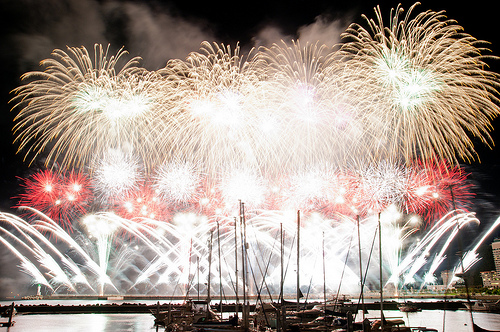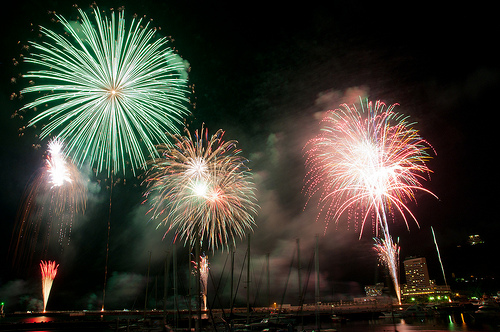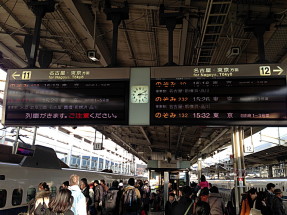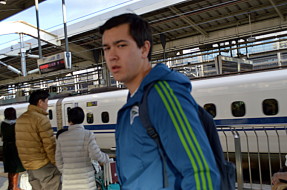Kinkakuji Temple
Kinkaku-ji (lit. “Temple of the Golden Pavilion”), officially named Rokuon-ji (lit. “Deer Garden Temple”), is a Zen Buddhist temple in Kyoto, Japan.
The site of Kinkaku-ji was originally a villa called Kitayama-dai, belonging to a powerful statesman, Saionji Kintsune. Kinkaku-ji’s history dates to 1397, when the villa was purchased from the Saionji family by Shogun Ashikaga Yoshimitsu, and transformed into the Kinkaku-ji complex. When Yoshimitsu died, the building was converted into a Zen temple by his son, according to his wishes.
During the Onin war, all of the buildings in the complex aside from the pavilion were burned down. On July 2, 1950, at 2:30 am, the pavilion was burned down by a 22-year-old novice monk, Hayashi Yoken, who then attempted suicide on the Daimon-ji hill behind the building. He survived, and was subsequently taken into custody. The monk was sentenced to seven years in prison, but was released because of mental illnesses (persecution complex and schizophrenia) on September 29, 1955; he died of tuberculosis shortly after in 1956.
The present pavilion structure dates from 1955, when it was rebuilt.
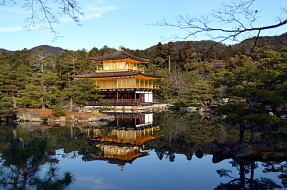
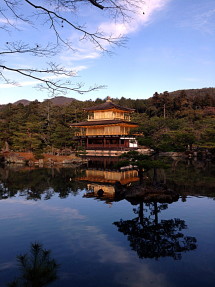
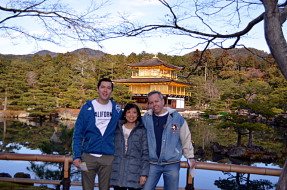
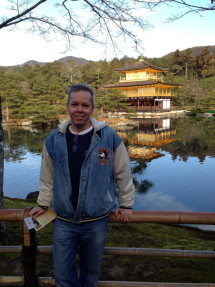

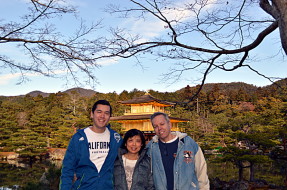
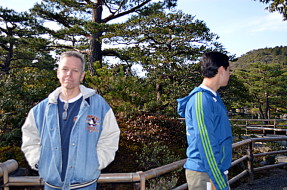
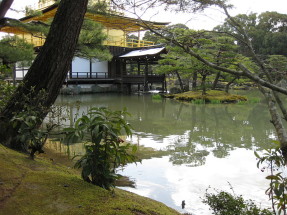
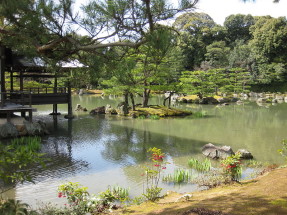
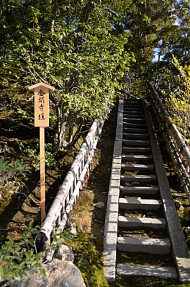

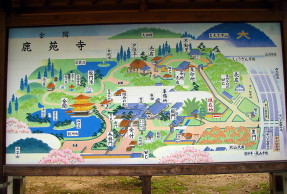
Nishijin Textile Center
Nishijin is a district in Kamigyo-ku, Kyoto, Japan, and (by extension) a traditional textile produced there, more narrowly referred to as Nishijin-ori (Nishijin fabric).
Nishijin weaving was created in Kyoto over 1200 years ago by using many different types of colored yarns and weaving them together into decorative designs. These specialized procedures are tedious, but necessary to obtain the spectacular design needed to ensure the quality of Nishijin weaving.
What the blurb above means is that images and patterns are not dyed after the fabric has been produced, the yarn is dyed before weaving, which yields the finest quality but is much harder to create.
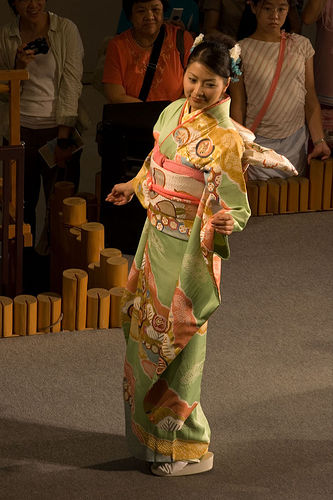
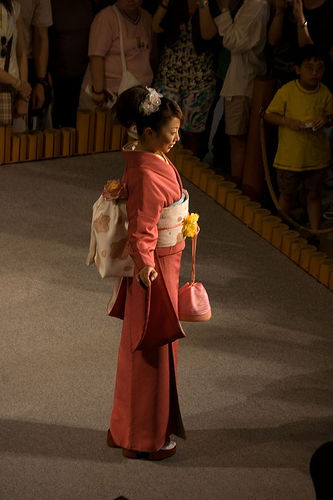
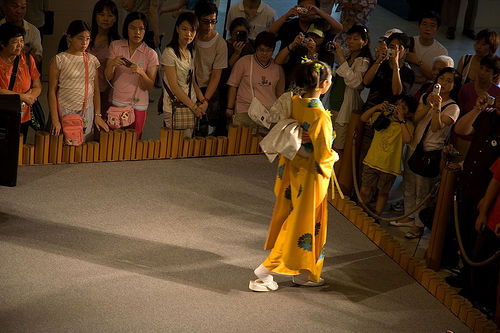
Tea Ceremony
We participated in a traditional Japanese tea ceremony, involving the preparation and presentation of matcha, a powdered green tea.
Fun fact: You don’t enter the tea room through that big opening in the front. You sort of crawl in through a small door on the right-hand side, which you can’t see in the photo. There’s a traditional reason for this, something to do with samurai not bringing swords to the tea ceremony (they won’t fit through the little door), but in modern times, it seems a bit of an unnecessary ordeal.

Bullet Train
We took the Shinkansen (bullet train) from Kyoto to Atami. These trains run on time. If the board says the train leaves at 3:12, it leaves at 3:12. Don’t show up at 3:13 and wonder where your train went.
Atami
In Atami, we enjoyed a traditional Japanese dinner, so traditional that our guide was unsure of what a couple of the items were. Atami is on the eastern coast and has a spectacular fireworks display that they shoot off over the bay.

